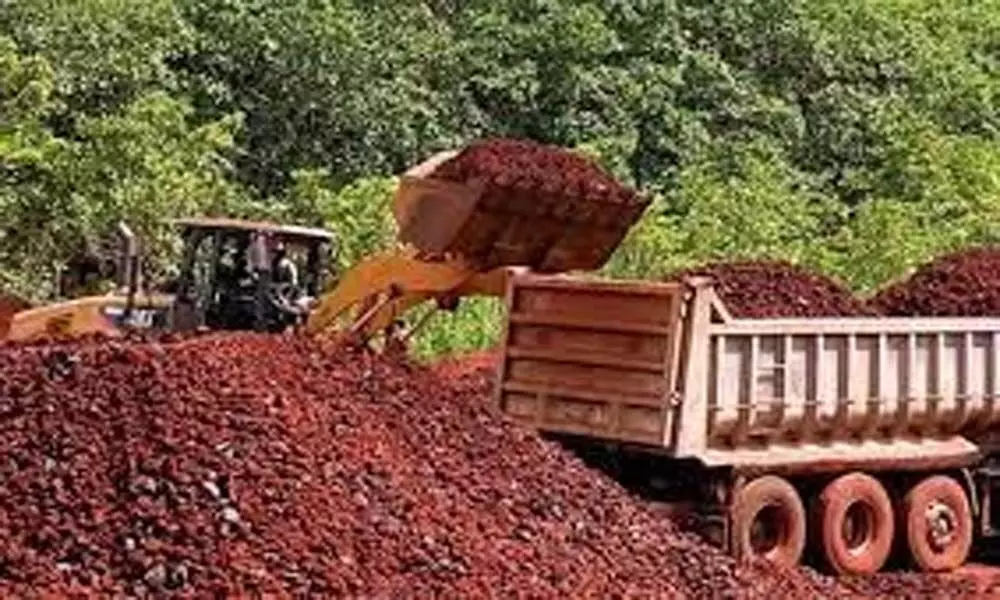Surging bauxite import bill taking a toll on India
Bauxite import rises 300% in past 6 yrs; Country needs to develop local supply chains to mitigate losses due to imports of raw materials
image for illustrative purpose

Indian Industrial Value Chain Collective (IIVCC), a group representing organizations involved in the industrial production and consumption supply chain activities across India on Tuesday released data on the loss resulting from import activities of bauxite, a raw material required to manufacture aluminium.
For the first quarter of 2021, this totals to $51.97 million (Rs 390 crore), which otherwise should have belonged to the people of India, with a significant share going to the participants in the value chain of extraction, transportation, processing and supply of bauxite and its end output.
Commenting on the situation, Abhay Raj Mishra, member of Indian Industrial Value Chain Collective (IIVCC) and President of Public Response Against Helplessness and Action for Redressal (PRAHAR), said, "Natural wealth in the form of minerals and natural resources of any region should ideally be utilized for the socio-economic development of its native populace. However, despite India having the fifth largest bauxite deposit in the world, with over 50 per cent of it located in Odisha alone, aluminium industries continue to rely on imported bauxite. This has caused a forex loss of $571 million (Rs 4,400 crores) in the last 6 years alone".
"With bauxite reserves of more than 3.8 billion tonnes, it is baffling that India has to meet its bauxite requirements from imports. For every single mine auctioned, there is potential to garner Rs 5,000 crores for the exchequer and create 10,000 livelihood opportunities. The positive ripple effect that this could have on the socio-economy of the region is significant," he added.
India, the nation with the fifth largest deposit of bauxite in the world, continues to witness large-scale forex loss due to its reliance on bauxite imports. With there being no substitute for bauxite, as it is the only ore used for aluminium production, the availability of bauxite is critical to the growth and development of the Indian aluminium industry. Testimony to the fact, bauxite import has increased by 300 per cent in past six years as per data published in Import-Export Databank, Ministry of Commerce, Government of India. This proves that despite the devastating second wave of Covid hitting the country and industries hard, raw material sufficiency continues to be a burning need for the domestic aluminium industry.
The State most affected due to this forex loss is Odisha which has nearly 50 per cent of the country's bauxite reserves and 25 per cent of its coal reserves, both of which are the primary raw materials for aluminium production. Odisha is the largest aluminium producer in India, with a production capacity of 2.7 million tonnes per annum. The State has attracted investments of over Rs. 1.4 lakh crores to make it the aluminium capital of the nation. Yet, instead of being able to leverage Odisha's rich mineral geology, manufacturers are forced to import bauxite, compromising the viability of the aluminium industry. Further, Odisha's population is yet to see its domestic natural deposit translate into economic development.
India should take a cue from the success stories of mineral-rich developing countries like Guinea in West Africa. Their concerted efforts to unlock their mineral power saw large-scale economic development and global dominance in the world's supply chain. Guinea, with the opening of multiple bauxite mines, saw its production, previously languishing at 18 million tonnes in 2015, enhanced by 400 per cent to 78 million tonnes in 2020. In a span of just 5 years Guinea changed the global landscape and is now a major worldwide supplier of bauxite, yielding rich socio-economic dividends to its citizens.ndian Industrial Value Chain Collective (IIVCC

